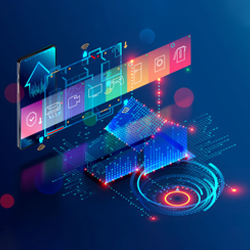With new functionalities come fresh, new threats. Most of today’s technological advancements come with security concerns concerns and issues. Sadly, remote desktop technology is no exception. Although beneficial at times, this technology has now become a target ground for modern hacking and online theft. To maintain a safe environment using this technology, check out these tips and tricks on how to secure a remote desktop.
What Is a Remote Desktop?
A Remote Desktop is a technology that provides users with the ability to connect to a computer remotely. Once connected, the users can now access and control the device as if they were sitting right in front of it. Remote desktop allows them to perform computing tasks even if they are not physically connected to the remote device. From there, they can open files, use apps, and even perform administrative tasks.
Many modern businesses are beginning to adopt remote desktop technology, which helps them boost efficiency and productivity. With remote desktops, employees can remain engaged in their work from any location, not just a central office. This enables quick responses to business requests and demands, regardless of the situation. Additionally, investing in remote desktops is a cost-effective strategy, as it allows businesses to reduce various expenses and save money in the long run.
Basic Security Tips for Remote Desktop
As previously stated, the remote desktop can bring security concerns to your business. Since it provides access to your network even from remote locations, hackers and online perpetrators can easily exploit its vulnerabilities and cause major security havoc. To ensure your security using this technology, follow these tips on how to secure remote desktop access on both servers and desktops.
1. Create Strong Passwords
The first tip on how to secure remote desktops is by creating strong passwords for your network. With this, it will be easier to prevent unwanted users from forcing their way into your system. As much as possible, all users should be prompted to provide the necessary login credentials before they can access your network. Your password should also contain numbers and special characters to make it more unique and harder to decode.
2. Limit User Access
The problem with remote desktops starts when you give users the ability to access your network remotely. Although that’s the entire point of having this technology, you still need to protect your system by limiting the number of users who can access your network. Not everyone in your company should use a remote desktop at all times. There should only be a specific time for them to access your network remotely. At any other time, all access should be disabled temporarily. This is to ensure that there is still a limitation when it comes to network accessibility outside of the office.
3. Ensure Endpoint Security
Here’s the thing: Not all of your employees’ personal devices are safe for your network. Some may have their fair share of security issues and concerns that can affect your own system’s security and protection. As such, try to make them check their devices regularly. As much as possible, ask them to install anti-malware apps that can combat malicious threats and viruses. You can also lend them your own office equipment so your network security isn’t compromised using a remote desktop.
4. Invest in a Secure Remote Desktop Tool
All of these tips won’t matter if you are not invested in a secure remote desktop tool. In choosing one, make sure it is safe enough to be used outside of your corporate network. To help you narrow down your choices, consider getting ITarian Remote Access.
This remote desktop tool enables you to securely connect to a remote endpoint from anywhere at any time. One of the key benefits of ITarian Remote Access is its encryption of remote sessions between local and remote devices. This ensures that all confidential information is protected from malicious attackers and online thieves.
ITarian Remote Access also requires users to undergo a strict verification process. In this stage, they have to provide the necessary login credentials before they can connect to your corporate network. This ensures that all users who have access to your network are authorized and authenticated. To help you get started with ITarian Remote Access, follow the steps below:
- Step 1: Visit the ITarian Remote Access page.
- Step 2: Click “GET NOW.”
- Step 3: Enter your email address.
- Step 4: Click “Get Free Now.”
- Step 5: Select “Save File.”
- Step 6: Run the setup file.
- Step 7: Read and accept the license agreement.
- Step 8: Click “Install.”
- Step 9: Click “Launch.”
Conclusion
By following these simple tips on how to secure a remote desktop, you can have a safe environment away from security threats and issues online. However, if you are not invested in secure remote desktop technology like ITarian Remote Access, all these security tips for Remote Desktop Protocol won’t matter in the end.
To help you secure remote desktop technology, get ITarian Remote Access now by clicking here.

